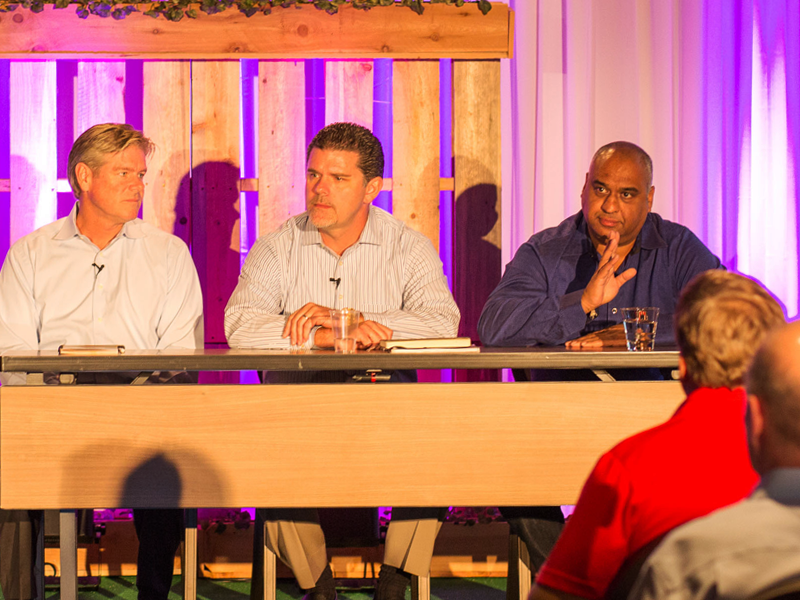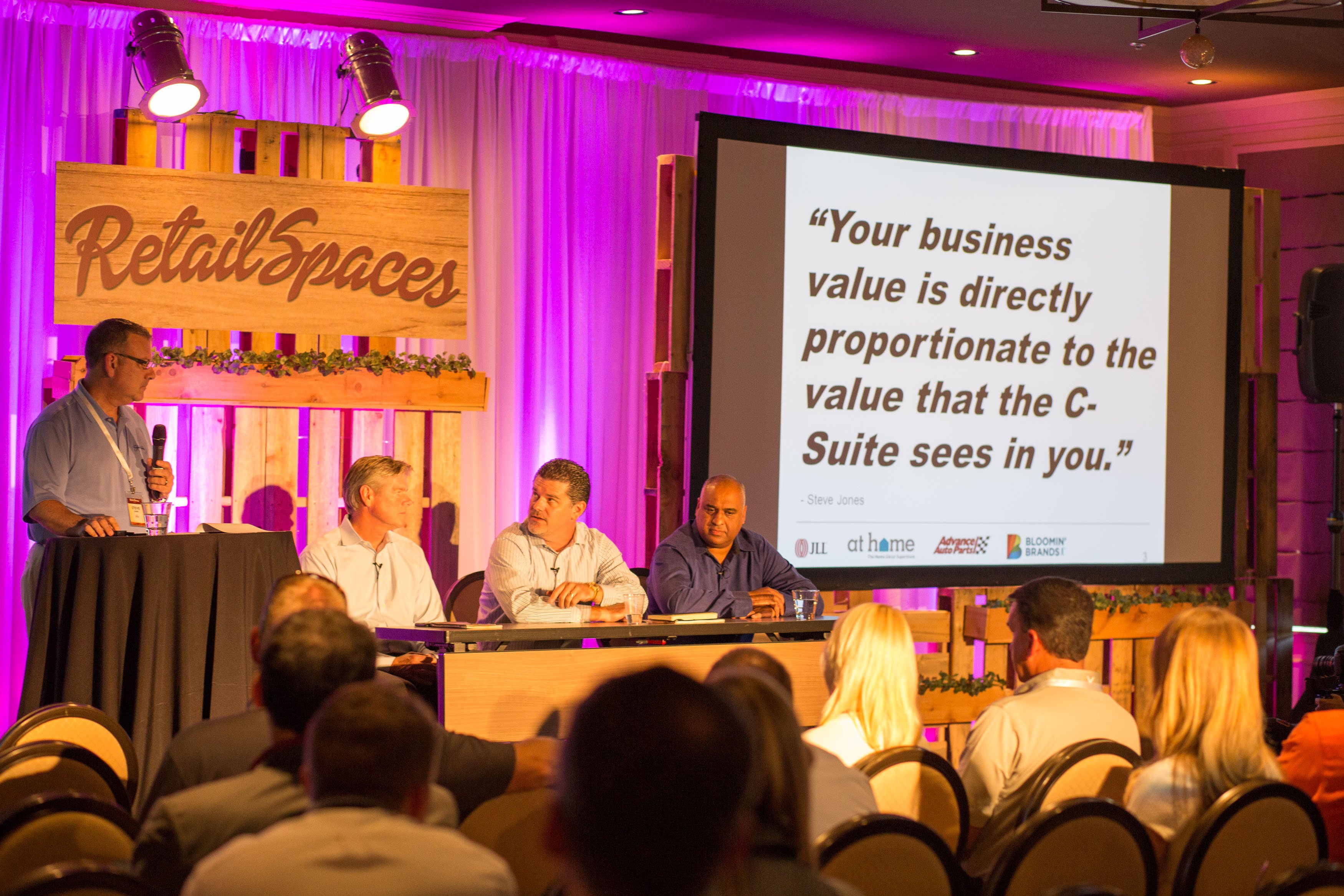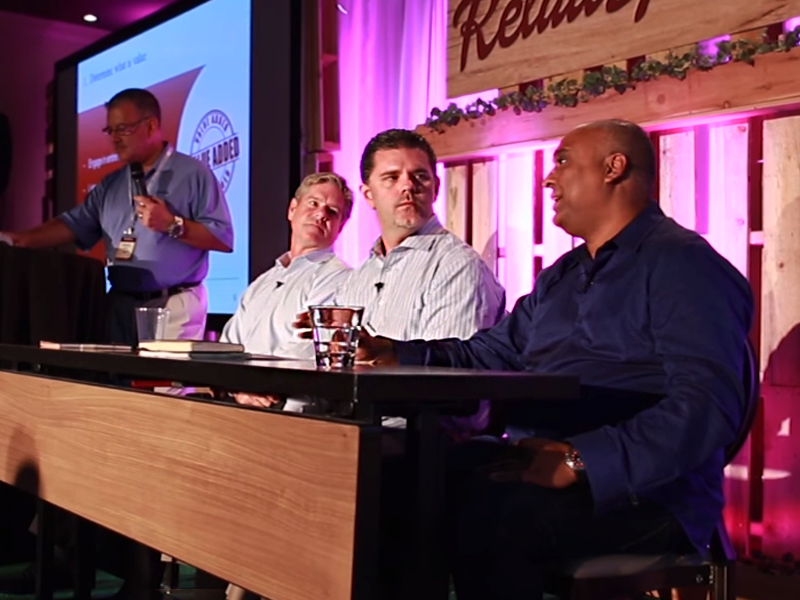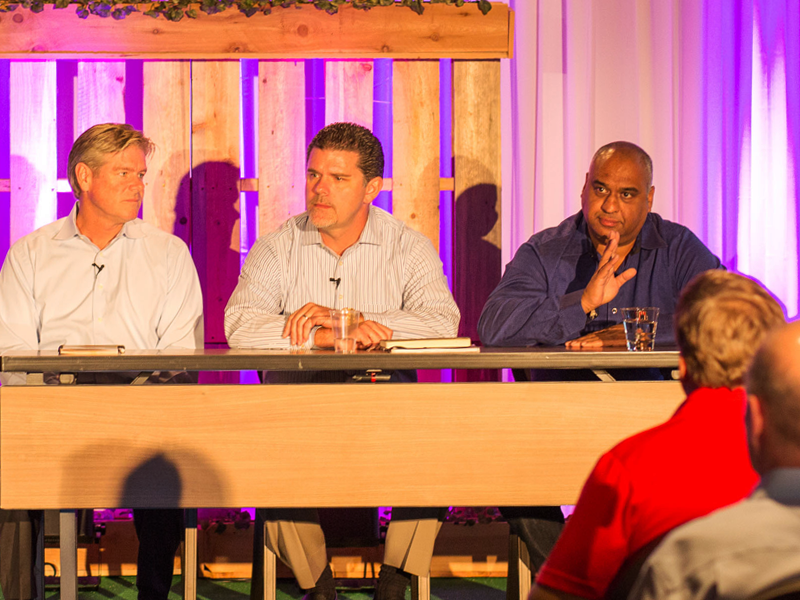When interacting with your executive leadership team, offer solutions immediately after presenting problems and find ways to develop relationships outside the office. That’s the consensus of veteran store development executives from three companies with thousands of locations.

“The truth is that as you mature in an organization, you shouldn’t bring problems to your CEO unless you have a solution, because you might get one you don’t like or agree with,” says Geno Coradini, then Vice President of Real Estate for Advance Auto Parts.
However, becoming a compulsive yes man/woman isn’t a long-term solution either, he adds. “Don’t feel you always have to go along to get along…If they have a suggestion that’s clearly off base, you have to be strategic but tell them that they’re off base.”
Steve Jones, International Director of Project Management Services for JLL, believes this topic is essential for RetailSpaces’ participants because, “Your business value is directly proportionate to how the C-Suite sees you.”

In the Trenches
The unvarnished Coradini was one of three panelists participating in “Communicating Value to the C-Suite” at RetailSpaces, a lively discussion facilitated by Jones. The discussion also featured Suk Singh, EVP and Chief Development Officer with Bloomin' Brands and Norm McLeod, Chief Development Officer with At Home.
Singh adds, “It is difficult to deliver messages to CEOs that they may not want to hear…and it all boils down to the relationship you have with your CEO or CFO. It affects how transparent you can be. If you don’t have that kind of relationship, you can’t go into those kinds of discussions.”
''Once you've lost credibility with the C-Suite, you're not getting it back. You're done.''
The Big 5
Before their discussion, the panelists agreed on five essential aspects of developing the C-Suite relationship:
- Determine “What is Value”?
- Develop Strategy for Creating Value
- Develop KPIs
- Use Data to Measure Success
- Report on Progress/Success
Creating Real Value
Addressing the first topic, McLeod believes building value is about understanding the overall values of a company, understanding its marketing objectives and how the C-Suite wants growth to occur. “The stores you build are part of that experience. You need to help drive the company’s culture.
Having worked for a number of retailers – including FedEx Office and Family Dollar – Coradini believes that “It often becomes less about real estate and more about understanding the CEO’s and CFO’s vision.” He recommends developing an understanding of where their pain points exist.
Singh makes a key point – the concept of “value” vacillates with the markets. “For example, 2007 and 2009 were very different times,” he says. “In 2007, it was ‘How fast can you get these stores open?’ In 2009 it was ‘How can you save me some money?’ You’d tell them what you’d save them and they’d want 20% more.”
''Your value doesn't decrease based on someone's inability to see your worth.. Or does it?''
Strategy For Value
The veteran retailers offer seasoned advice for creating value, emphasizing other values in addition to simple “growth,” including the importance of translating your vision to leadership and leadership’s vision to your team.
Coradini emphasizes aligning on strategy and then communicating that to your team. “You’ll see far too often that when there’s lack of alignment with management, people will check out and think that you’re not being transparent with your directions.”
McLeod learned the importance of long-term planning during his years at FedEx. “It’s not just about setting up what you’re going to do this year, it's about what you’re going to do over the next five years. The executives want to know, not just how you’re going to open 20 stores this year, but how you support them? How do you have processes and resources in place to support the stores? And then at that time you can quantify the value that we’re going to create,” he says.
“I think that if they see a holistic plan like that they feel more secure that you’ve really thought through it. I think both short-term and long-term plans are essential.”
Data, Data, Data
A believer in the “What gets measured, gets moved” philosophy, Singh stresses the importance of collecting “clean” data over time.
“The challenge of measuring in our industry is making sure you have clean data,” he says. “Making sure you have very clean data when you’re measuring KPIs is important. You need the help of the finance team.”
He adds that it’s always difficult to truly have “enough” data, adding that you need at least 4-5 years of data history as well as an understanding of other factors, such as expenses in each region, citing as an example how the costs associated with operating a restaurant in New Jersey will be an apples vs. oranges comparison to similar restaurants in other states, like Florida.

“You try to understand how, regionally, you were performing. If you just looked at rents, you’d only be building in Florida.”
The other panelists agreed on the importance of using data to measure success. “Trends are important to understand. Sometimes in our industry we get hung up with trends that might not be true indicators,” says Coradini. “For example, we look at major metropolitan areas, urban areas and suburban areas. And we look at our competition. It’s important to understand them.”
Coradini warned against basing success solely on growth. “Many of you have seen discount dollar stores open 500 stores a year and, a decade later, they close 700,” he says. “You can easily contaminate your portfolio.”
''It's not hard to make decisions once you know what your values are.''
Reporting Progress—Best Practices
In the delicate dance of reporting your team’s success to your company’s top executives and board, the store development panel recommends a combination of transparency, managing perceptions and anticipating their concerns.
“It’s about how you manage the board and build that level of trust,” says McLeod, who recommends old-fashioned networking and, for lack of a better term, schmoozing. “Spend time with them in an environment outside the workplace.”
When problems arise, solve them or offer workable solutions before presenting them to the executive suite.
Stagger Development
In response to questions from the audience, the panelists addressed the importance of meeting goals strategically and pragmatically, taking as an example an edict from the C-Suite to open 60 stores in one year. Is opening five stores each month comparable to opening 30 in November and 30 in December?
“Financially there are benefits to opening stores gradually. You can open stores better by spreading it out, especially with restaurants,” says McLeod.
Coradini adds, “Many times, early on in someone’s career, at a dealmaker level, it’s a numbers game, but over time you learn it's not just about the numbers. Spreading out stores regionally is also significant to opening stores successfully.”
Time Crunch
A final thought on the delicate balance of relating to the C-Suite: Don’t waste their time! When you schedule time with your CEO, CFO or board, use time wisely. Know what you want to discuss.
“It’s really important that you take info that you have and report succinctly to your CEO,” says Singh “(Because) after 6 minutes, you’re done.”
You can watch the full discussion below...
Posted by
Physical Retail Reimagined.
RetailSpaces is a community for store development and design innovators.
March 29-31, 2026 | San Antonio, TX
Learn More!








Comments